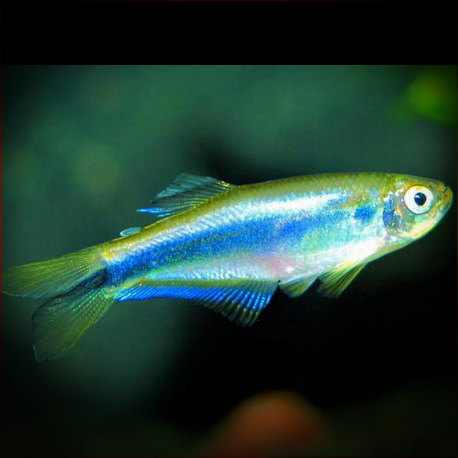More info
Datasheet
| Minimum Tank Size | 70 litres / 18.49 US gallons |
| Maximum Size | 6.0cm / 2.36inches |
| Temperature | 18°C / 64.40°F - 23°C / 73.40°F |
| Hardness | 2-20ºdH |
| pH | 6.0-7.0 |
General DescriptionThe Blue Tetra, scientifically known as Mimagoniates Microlepis, is a peaceful species that distinguishes itself as a better resident for community tanks compared to its relative, Knodus borki, due to its less aggressive nature and absence of fin-nipping tendencies.
Aquarium SetupFor this species, a tank of a minimum of 70 litres is necessary, with a preference for a heavily planted environment featuring a dark substrate, twisted roots, and bogwood. Providing both dense vegetation and open swimming spaces is ideal; floating plants can offer additional shade. Replicating its natural habitat of well-oxygenated streams can also be an intriguing project, with sand substrate, smooth rocks, driftwood, and careful consideration of water flow.
BehaviourBlue Tetras are social by nature and function best in groups of at least 6, ideally 10 or more, as they are shoaling creatures. When kept in the company of their kind, these tetras exhibit a more effective and visually appealing behavior. They are best suited for tanks with other small, peaceful South American species and do not fare well with larger or aggressive tankmates.
Feeding and DietAlthough primarily insectivores in the wild, Blue Tetras display versatility in captivity by readily accepting a variety of foods. A diet comprising live and frozen options such as bloodworms, Daphnia, and brine shrimp, supplemented with dried flakes and granules, supports optimal condition and coloration.
Reproduction & DimorphismBreeding Blue Tetras involves setting up a separate tank with suitable conditions, such as dim lighting, fine-leaved plants like java moss for egg deposition, and soft, acidic water at temperatures of 70-74°F. Spawning can occur in groups or pairs, with meticulous attention required to prevent adult fish from consuming the eggs. Sexual dimorphism is evident, with adult females displaying a rounder belly and less intense coloration than males.
Habitat and DistributionIn their native habitat, Blue Tetras, hailing from southeastern Brazil, are commonly found in flowing clear water streams, small rivers, and tributaries within coastal floodplains. Their distribution spans from southern Bahia to the northern region of Rio Grande do Sul.

